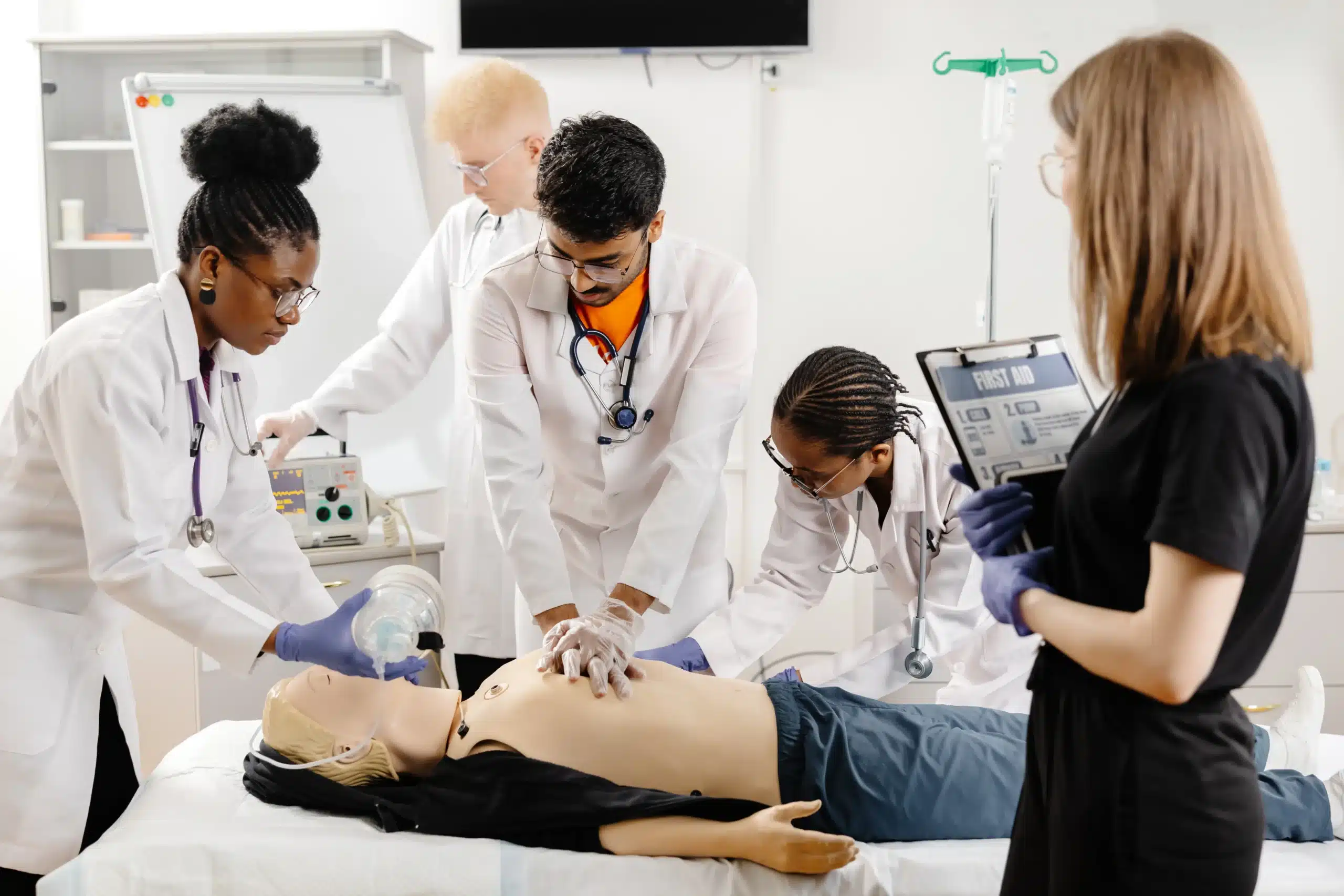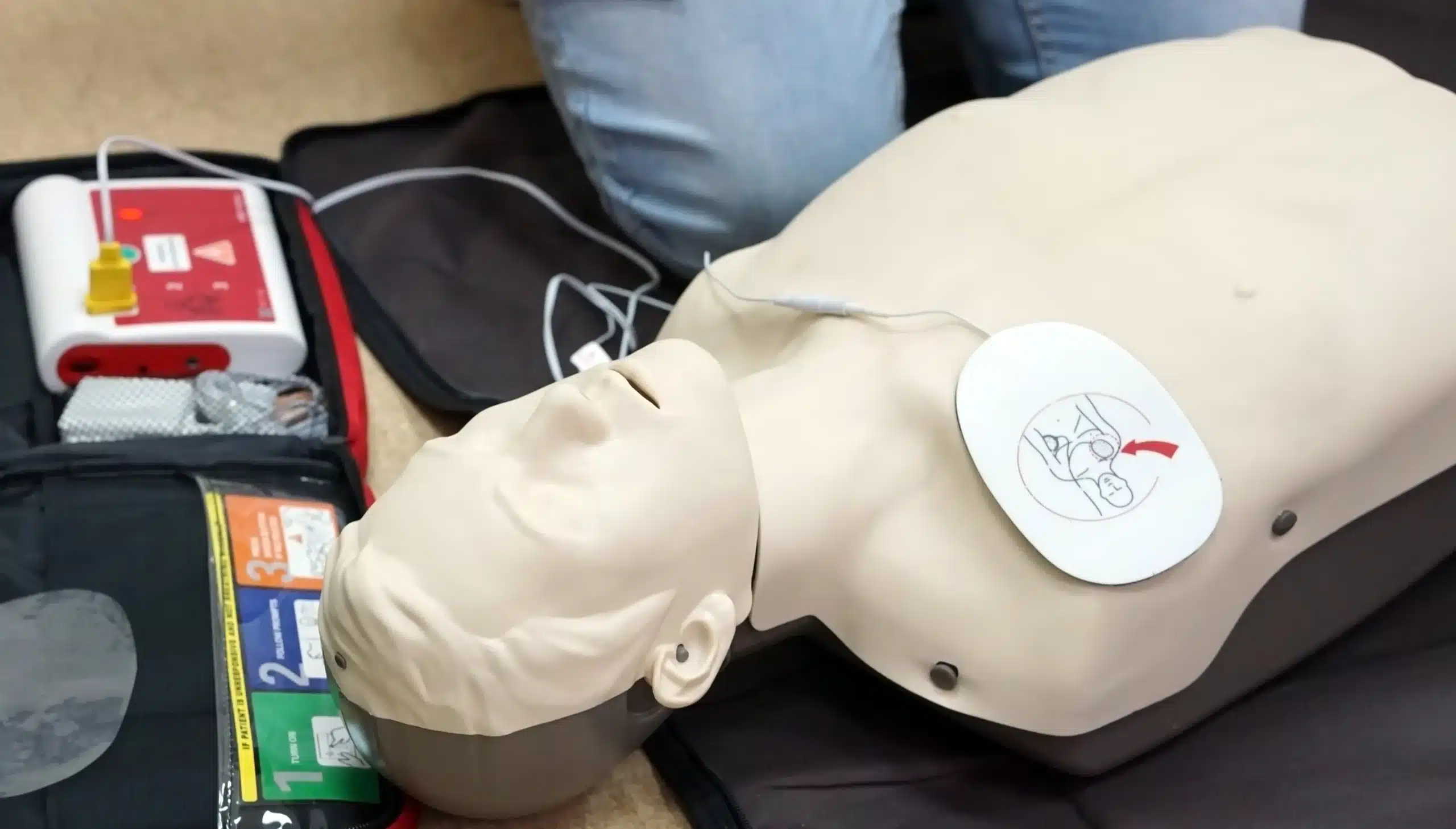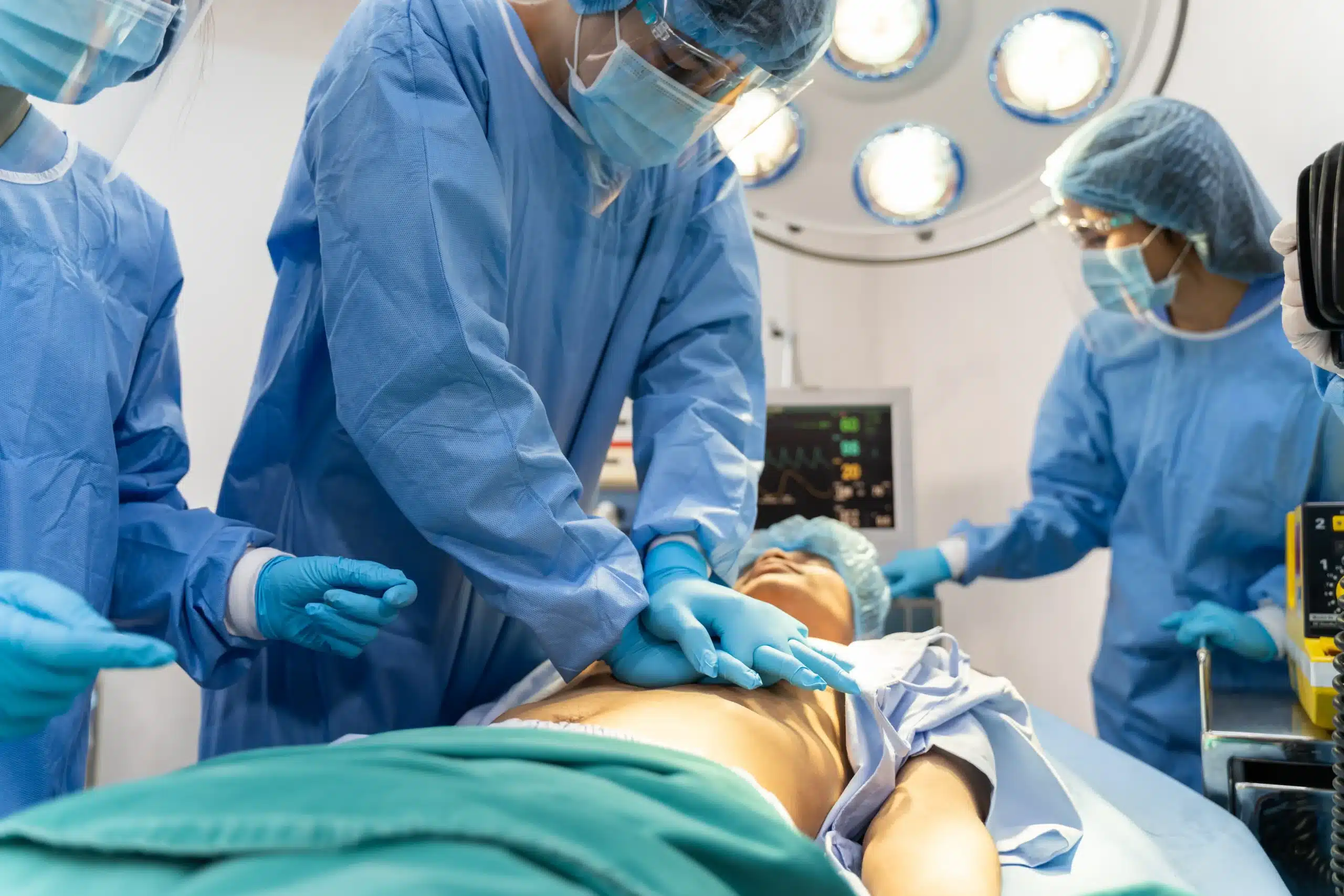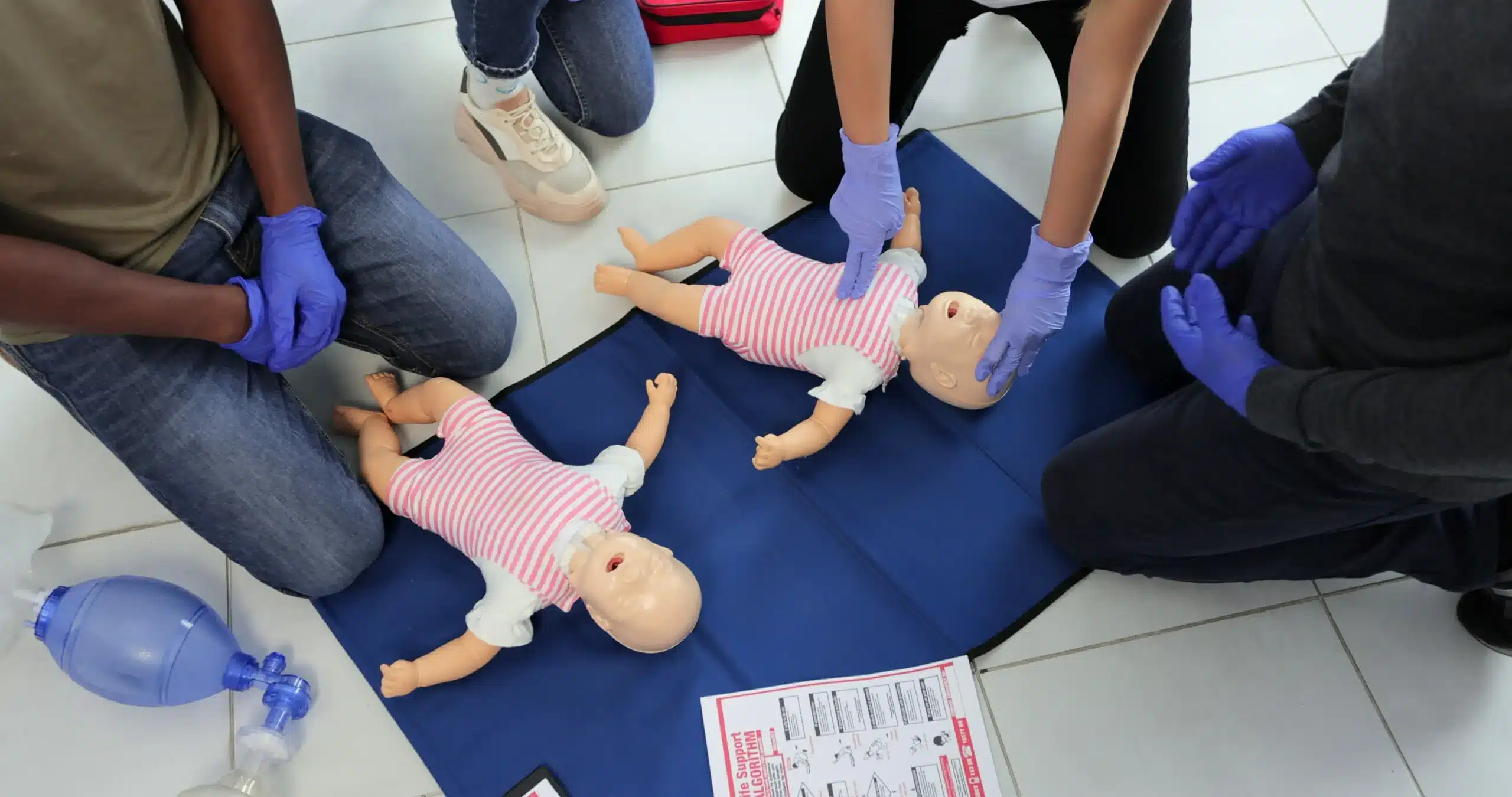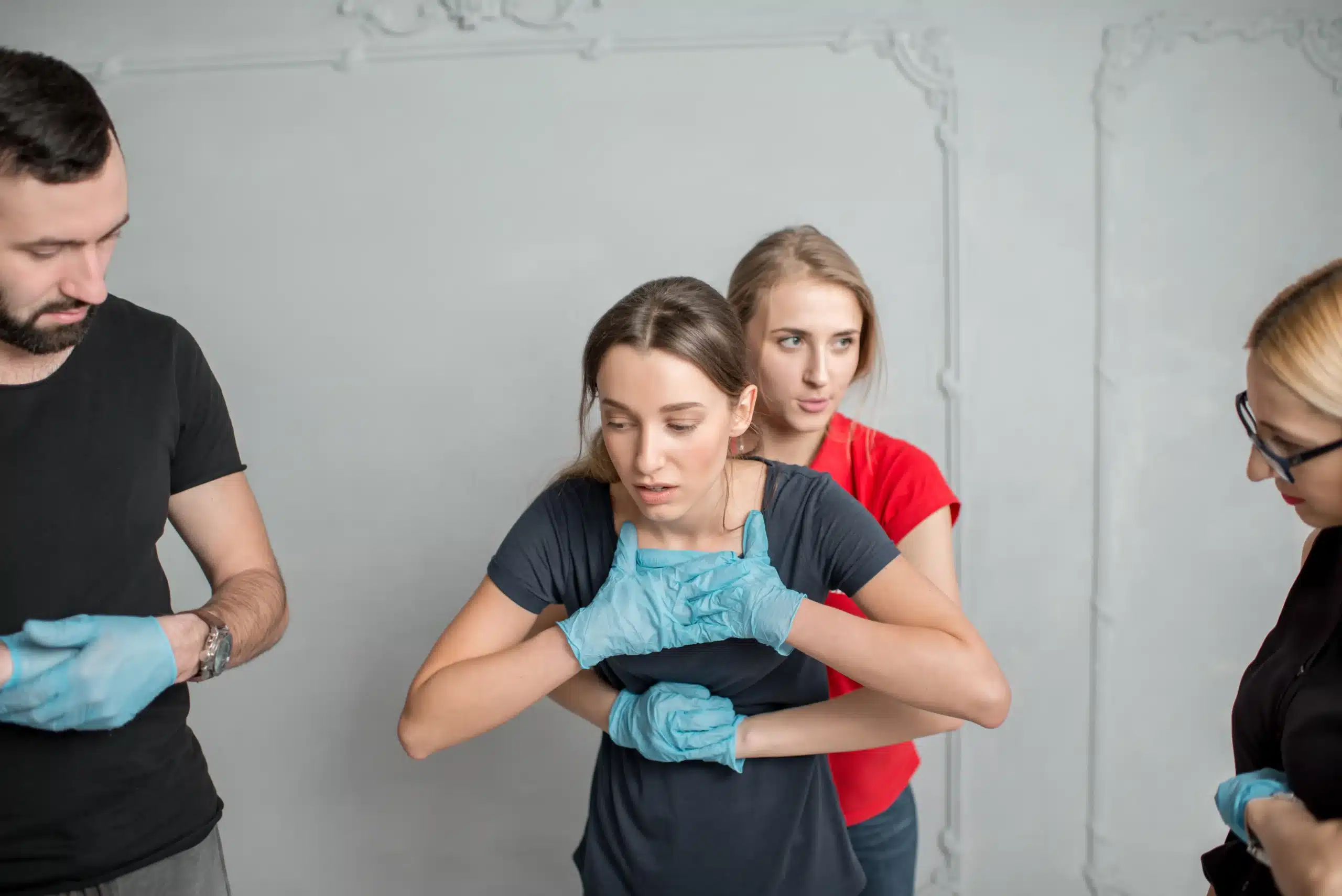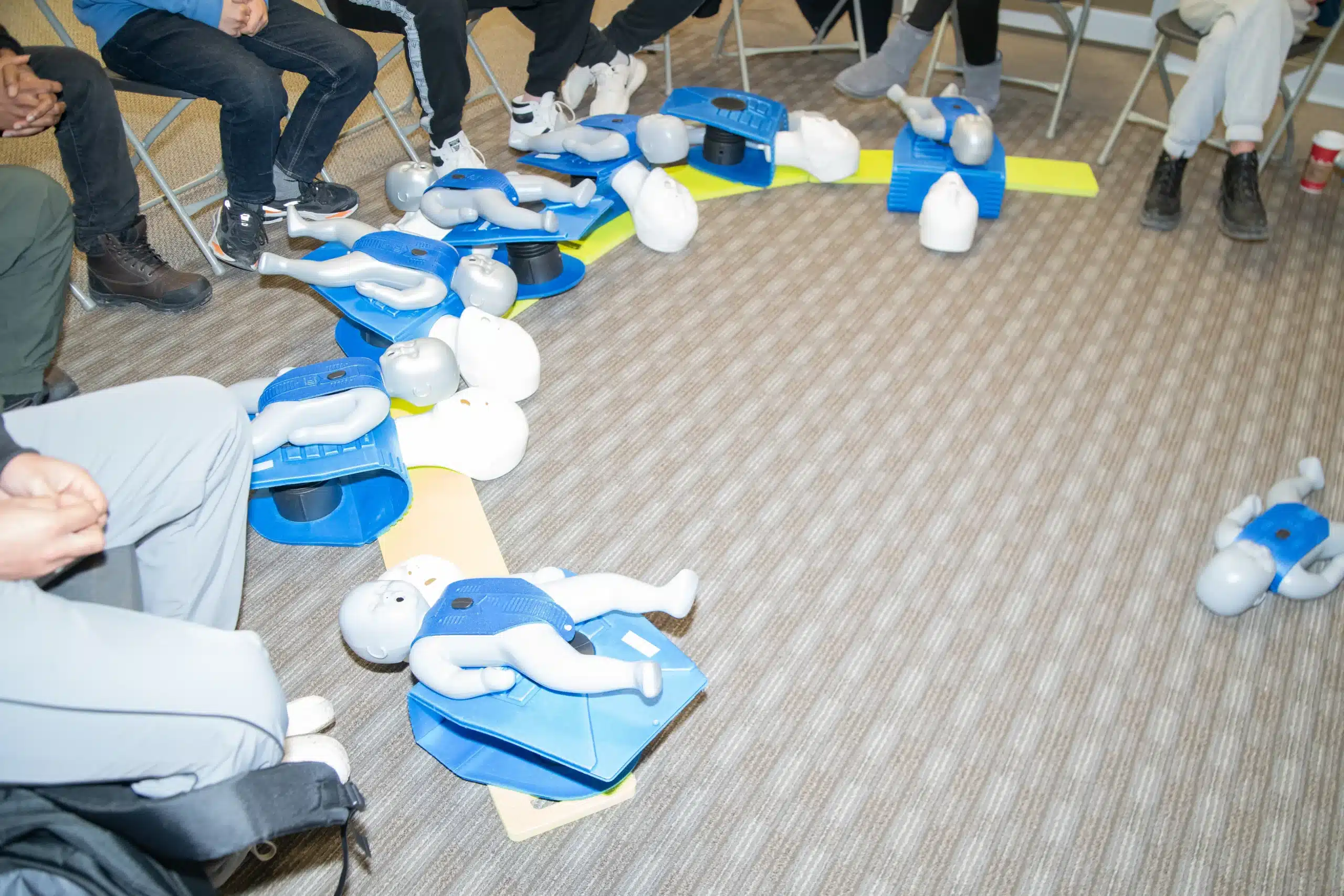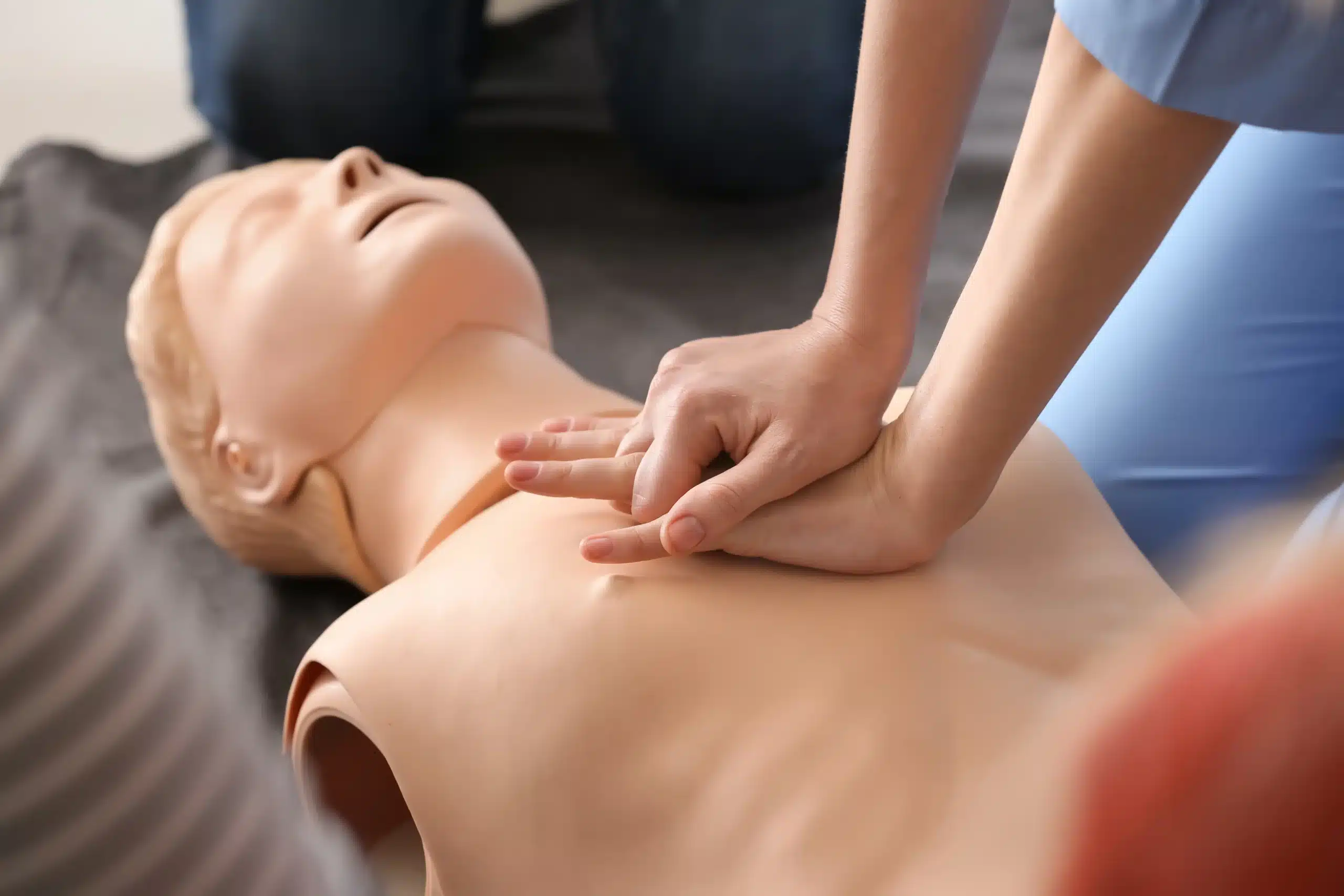Emergencies can happen anytime, anywhere. Would you know what to do? BLS certification gives you the confidence and skills to respond effectively in critical situations, providing essential care until professional help arrives. This article is your guide to BLS classes in SF, covering everything from finding the right course to understanding the certification process. We’ll explore different class formats, discuss costs and discounts, and delve into the core skills you’ll learn. Whether you’re a healthcare professional or simply want to be prepared for the unexpected, this guide will help you get started with BLS training.
Key Takeaways
- BLS skills empower anyone to save lives: Equipping yourself with BLS training means you can confidently respond to emergencies and make a real difference when it matters most.
- Choose a BLS course that fits your life: Think about your schedule and preferred learning style when selecting a class. Various formats and locations are available, making it easier to find the right fit.
- Maintain your BLS certification: Remember to renew your certification every two years to stay up-to-date on the latest life-saving techniques and maintain your valuable skills.
What is BLS & Why Does it Matter?
Basic Life Support (BLS) is a crucial set of lifesaving skills used in emergencies like cardiac arrest, respiratory distress, and choking. BLS training teaches you how to perform CPR, use an AED (automated external defibrillator), and clear obstructed airways. These skills are essential for anyone who might need to help during a medical crisis.
Getting BLS certified isn’t just for healthcare professionals; it’s valuable for anyone who wants to be prepared for an emergency. These skills can dramatically improve the outcome for someone needing immediate medical attention. Fast action can truly make a difference. Knowing BLS can give you the confidence to respond effectively in various settings, from workplaces to public spaces. This highlights the importance of widespread BLS training, as anyone can be the first person on the scene when an emergency strikes.
Find Top BLS Classes in San Francisco
Finding the right BLS class can feel overwhelming with so many options. To help you out, I’ve compiled a list of reputable providers offering BLS certification in San Francisco.
Safety Training Seminars
Safety Training Seminars offers a wide range of American Heart Association (AHA) certified courses, including BLS, ACLS, PALS, and First Aid. With daily classes in over 60 cities across Northern California, they provide accessible BLS training for both groups and individuals. Their commitment to customer service and a low price guarantee makes them a popular choice.
American Red Cross
The American Red Cross in San Francisco offers Basic Life Support (BLS) certification and renewal training. This training is geared towards healthcare providers and includes options for both online and in-person (simulation learning) classes. You can explore their BLS course options on their website.
Revive CPR
Revive CPR offers American Heart Association (AHA) certified CPR, BLS, and First Aid classes in San Francisco. Their classes are instructor-led and hands-on, focusing on practical skills development. Visit the Revive CPR website for more information.
Bay Area CPR
Bay Area CPR offers a wide range of American Heart Association-certified courses, including BLS, ACLS, PALS, and Wilderness First Aid. They’re known for their flexible scheduling and numerous locations throughout the Bay Area. You can find a CPR course that fits your needs on their site.
BLS Class Formats & Durations
Finding the right BLS class format is key to successfully completing your training. Let’s break down the most common options available in San Francisco: in-person, online, and blended learning. Each has its own advantages depending on your learning style and schedule.
In-Person Classes
In-person American Heart Association BLS courses in San Francisco offer the benefit of direct interaction with an instructor and hands-on practice. These classes are often available daily across various locations, making it easier to find one that fits your schedule. A typical in-person BLS class runs about four to six hours, covering essential skills like CPR, AED use, and how to relieve choking. For available dates and times, check out our BLS course calendar.
Online Courses
Online BLS training provides a convenient alternative, allowing you to complete the coursework at your own pace from anywhere with an internet connection. This format is particularly helpful for those with busy schedules or limited access to in-person training locations. However, it’s important to remember that online-only courses may not include the hands-on practice component crucial for mastering BLS skills. Many providers offer online coursework as part of a blended learning approach, which we’ll discuss next. Learn more on our BLS course page.
Blended Learning
Blended learning combines the flexibility of online learning with the practical application of in-person skills sessions. Programs like HeartCode BLS allow you to learn the theoretical material online at your own speed, then attend a shorter in-person session to practice and demonstrate your skills. This approach offers a balanced learning experience, ensuring you grasp both the knowledge and practical application necessary for effective BLS. This format is a great way to get the best of both worlds. For more details, visit our HeartCode BLS information page.
Compare BLS Class Prices & Value
Finding the right BLS class often involves balancing quality with cost. Let’s break down the typical price range for BLS certification in San Francisco and explore factors that influence pricing.
Average San Francisco Costs
BLS classes in San Francisco typically range from $50 to $150. This range depends on several factors, so it’s helpful to understand what contributes to the final price. Knowing the average gives you a benchmark when comparing different providers and course options. For a deeper dive into San Francisco BLS classes, check out this helpful guide.
Factors Impacting Price
Several factors can influence the cost of your BLS class. A training provider’s reputation and experience often play a role. Established providers with a strong track record may charge a bit more. The course format—in-person versus online or blended learning—also affects the price. In-person classes typically involve facility costs and instructor fees, while online courses might offer more flexibility and potentially lower prices. Finally, including additional materials, like pocket masks or certification cards, can impact the overall cost. CPR Near Me offers insights into various providers and what they offer.
Provider Pricing
Safety Training Seminars is known for offering competitive pricing on its American Heart Association (AHA) courses, including BLS certification, throughout the San Francisco Bay Area. They prioritize providing high-quality training at accessible rates. You can explore their course options and pricing directly on their website. This guide also highlights Safety Training Seminars as a provider with competitive rates for BLS courses in San Francisco. When comparing providers, remember to consider the overall value—the quality of instruction, the reputation of the certifying organization, and the convenience of the location and schedule—along with the price.
BLS Training Discounts & Promotions
Saving money on essential training is always welcome. Many providers offer various discounts and promotions, making BLS certification more accessible. Here’s what to look for:
Group Discounts
If you’re coordinating training for a group, like your company’s staff or a community organization, ask about group discounts. Safety Training Seminars, for example, offers discounts up to 30% for groups signing up together. This can significantly lower the per-person cost, making it easier to get your whole team trained. Check with your chosen provider about their group discount policies and minimum participant requirements. You can find more information on Safety Training Seminars group discounts.
Student Offers
Students can often find discounted rates on BLS training. With San Francisco BLS classes typically ranging from $50 to $150, depending on the provider and certification type, student discounts can be helpful. When comparing providers, ask about specific student discounts and what identification is required. More information on BLS class pricing in San Francisco can help you compare costs.
Packages & Specials
Many training providers offer packages bundling BLS certification with other courses, such as ACLS or PALS. These packages are often cheaper than taking each course separately. Safety Training Seminars is known for its competitive pricing and frequently offers promotional deals and package options. Check their website or contact them directly to learn about current CPR class packages and specials. This is a great way to gain multiple certifications while saving money.
What Happens in a BLS Class?
Wondering what to expect in a BLS class? It’s a dynamic mix of learning and hands-on practice designed to equip you with the skills to respond to medical emergencies. Let’s break down the key components:
Core Skills & Curriculum
BLS classes cover the core skills needed to provide immediate care in life-threatening situations. You’ll learn adult, child, and infant CPR, focusing on chest compressions, rescue breaths, and how to recognize the signs of a cardiac arrest. Airway management techniques are also a crucial part of the curriculum, teaching you how to open and maintain a clear airway. You’ll also receive training on how to use an AED. These devices can significantly increase the chances of survival in cardiac arrest cases. Many providers, like Safety Training Seminars, base their courses on the American Heart Association guidelines, ensuring you receive up-to-date training.
Hands-on Practice
BLS classes aren’t just about lectures and textbooks. You’ll spend a significant portion of your training practicing hands-on. You’ll work with mannequins and training AEDs to simulate real-life emergency scenarios. This practical experience is essential for building muscle memory and confidence, allowing you to react quickly and effectively under pressure. This hands-on training helps solidify the skills you learn and prepares you to apply them in a real emergency.
Assessment & Certification
Once you’ve completed the training modules, you’ll be assessed on your knowledge and skills. This typically involves a written exam and a practical skills test, where you demonstrate your proficiency in CPR, AED use, and airway management. Upon successful completion, you’ll receive your BLS certification, which is usually valid for two years. Some providers offer various certification options, including same-day certification, to accommodate different needs and schedules. You can find more information on BLS Certification from various providers.
BLS Certification: Validity & Renewal
Certification Period
Your BLS certification is valid for two years. This standard timeframe, established by organizations like the American Heart Association, ensures providers stay current with the latest life-saving practices. Keeping track of your expiration date is essential for maintaining your credentials and delivering the best possible care.
Renewal Requirements
To renew your BLS certification, you must complete a refresher course before your current certification expires. These courses are designed for experienced providers, offering a concise review of essential skills and knowledge. For specific renewal options, check with your certifying organization or a training provider like Safety Training Seminars, which offers various AHA courses, including BLS renewal.
Provider Renewal Policies
Training providers often have specific renewal policies, so it’s wise to review their websites or contact them directly. Many, including Safety Training Seminars, offer flexible renewal options and schedules. Prioritize providers offering American Heart Association certification for its wide recognition and acceptance. Understanding these policies in advance simplifies the renewal process and prevents any unexpected issues.
Choose the Right BLS Class
Finding the right BLS class means considering a few key factors to ensure the training fits your needs and learning style. Let’s break down what to look for when making your decision.
Your Schedule & Learning Style
First, think about your availability. Do you need a weekday class, a weekend option, or an evening course? Many providers in San Francisco offer various schedules to accommodate busy professionals, students, and families. Some, like Revive CPR, emphasize flexible scheduling. Beyond just the time of day, consider your preferred learning style. Do you thrive in a hands-on, in-person setting, or would you prefer the flexibility of an online or blended learning experience? Knowing your learning style will help you choose a course format that maximizes your comprehension and retention.
Provider Reputation & Offerings
Not all BLS classes are created equal. Look for training centers with a strong reputation and a proven track record. Safety Training Seminars, for example, is a well-regarded, woman-owned AHA Training Center offering a comprehensive range of courses, including BLS, ACLS, PALS, and First Aid. Check if the provider is an authorized training center for a recognized organization like the American Heart Association. This ensures the curriculum meets established standards, and your certification will be widely accepted. Also, consider the range of courses offered. If you anticipate needing additional certifications like ACLS or PALS later, choosing a provider that offers those courses can streamline your future training.
Location & Accessibility
Convenience matters, especially in a busy city like San Francisco. Consider the training center’s location and its accessibility. Is it easily reachable by public transportation or car? Does the facility offer ample parking? Safety Training Seminars offers in-person BLS courses throughout San Francisco, often with daily classes, making it easier to find a convenient time and place. If you’re traveling from Daly City, San Mateo, or Oakland, factor in commute times and potential traffic when selecting a class location.
Prepare for Your BLS Class
Getting ready for your BLS class sets you up for a smooth learning experience. Knowing what to expect and having the right materials beforehand can make a real difference. Here’s how to prepare:
Required Materials & Pre-Coursework
Before your class, check with your provider for their specific requirements. Safety Training Seminars, for example, offers various CPR certification courses in San Francisco. Confirm any pre-course work directly with your provider or through their website. This ensures you’re familiar with the core material and ready for hands-on practice. Some providers, like Safety Training Seminars, may offer a free study guide to review key concepts before class.
What to Bring
A few essential items can make your learning experience even better. Bring a notebook and pen for notes and questions. If your provider offers a pre-study guide, like the one from Safety Training Seminars, bring that along. Comfortable clothing is also a good idea, as you’ll be participating in hands-on practice. Check with your provider to see if they have any specific requirements.
Tips for BLS Training Success
BLS training gives you life-saving skills, so approach your class with focus. Active participation is key—ask questions, engage in discussions, and take advantage of hands-on practice. Reviewing resources on common BLS misconceptions can deepen your understanding and prepare you for real-world scenarios. Remember, the skills you learn empower you to make a real difference in emergencies. Articles like this one on debunking BLS myths can be particularly helpful.
Common BLS Class Misconceptions
Let’s clear up a few common misconceptions about BLS classes. These myths can sometimes prevent people from getting the training they need, so let’s set the record straight.
Who Needs BLS Training?
One of the biggest misunderstandings about BLS training is that it’s only for doctors and nurses. While it’s definitely essential for healthcare providers, BLS certification equips anyone with life-saving skills usable in everyday emergencies. Think about it: a medical crisis can happen anytime, anywhere—at home, at the gym, even at the grocery store. Knowing how to use an AED, perform CPR, and clear someone’s airway can make all the difference while waiting for first responders. So, whether you’re a teacher, a construction worker, a parent, or just someone who wants to be prepared, BLS training is a valuable skill set.
How Often Do I Renew?
Another misconception is that BLS certification lasts forever. Unfortunately, that’s not the case. Like many certifications, your BLS skills need a refresh. Generally, BLS certification is valid for two years. Renewing your certification ensures you’re up-to-date on the latest guidelines and techniques, which can change over time. This refresher is crucial for providing effective and safe care during an emergency.
When Can I Use BLS Skills?
Some people believe BLS skills are only applicable in a hospital setting. The truth is, emergencies don’t limit themselves to hospitals. BLS skills are relevant wherever you are—at work, at school, or out in public. Knowing how to respond effectively in a crisis can truly save a life, regardless of location. BLS training empowers you to act confidently and quickly in various situations, making you a valuable asset in any emergency. Check out this article on BLS for healthcare providers for more information.
Related Articles
- Advanced Cardiac Life Support (ACLS) in Daly City – San Francisco CPR Classes
- Low-Cost CPR Training in Northern California: A Guide – San Francisco CPR Classes
- CPR Classes in San Francisco: A Complete Guide – San Francisco CPR Classes
- BLS CPR Classes in San Francisco (Bayshore)
- ACLS Renewal in SF: Your Complete Guide – San Francisco CPR Classes
Frequently Asked Questions
Is BLS certification only for healthcare professionals? Not at all! While essential for healthcare workers, BLS skills are valuable for anyone who wants to be prepared for an emergency. These skills can be used in any setting, from the workplace to public spaces.
What does a BLS class cover? BLS classes teach essential life-saving techniques, including CPR for adults, children, and infants, how to use an AED, and how to clear an obstructed airway. You’ll learn both the theory and practical application of these skills.
How long does BLS certification last, and how do I renew it? BLS certification is typically valid for two years. Renewal involves completing a refresher course before your current certification expires. Check with your certifying organization or training provider for specific renewal options.
What are the different formats for BLS classes, and which one is right for me? BLS classes are offered in various formats, including in-person, online, and blended learning (a combination of online and in-person). The best format depends on your learning style, schedule, and preference for hands-on practice.
How much does a BLS class cost in San Francisco? BLS class prices in San Francisco generally range from $50 to $150, depending on the provider, course format, and any included materials. Many providers offer discounts for groups, students, or combined course packages. It’s always a good idea to compare pricing and value when choosing a class.
